
Griffiths, Proceedings of the Biological Society of Washington 27(6): 26, 1914
Herbarium (submitted as O. engelmannii); Herbarium (O. riparia-like)
Original Description
What is Opuntia riparia?
Opuntia riparia is a prickly pear cactus that grows in low, wide thickets in southern Arizona. It rarely reaches waist-high, but occasional cactus stems may reach to 1 to 1.2 m tall.
Details
O. riparia plants form open, hemispherical shrubs generally to about 30 cm tall, occasionally some branches reach up higher. Many plants may occur together to form thickets. Pads are often obovate, elongate, or elliptical, averaging about 20 cm long. The dark areoles are noticeably large and white spines are present in most of them. There are 2 to 6(8) white spines per areole with one or two small ones that are deflexed. Spines may or may not darken at the base. Spines on this Opuntia are 1 to 2 cm long, stout, thick, and noticeably angular in cross section.
Flowers are a rich, bright yellow. The style is white and the dark green stigma is large (up to 1 cm across when expanded). Ovaries and fruits may be somewhat to distinctly elongate, with ovaries usually turbinate and fruits usually ovoid. Fruits may sometimes be narrowed or tapered at the base. The seeds are not large but are larger than those of O. engelmannii.
Ploidy is not known.
Other Notes
O. angustata and O. riparia are similar and may, in fact, represent the same taxon. O. riparia occurs farther south than O. angustata (near Superior, Arizona and south into Mexico).

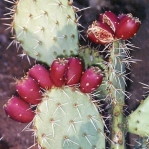
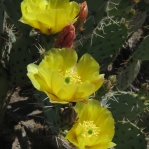
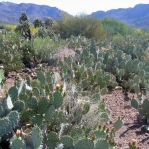
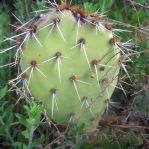
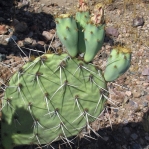
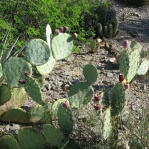
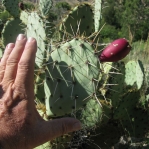
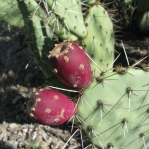
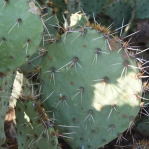
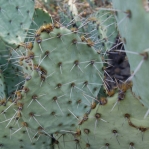
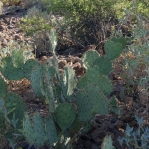
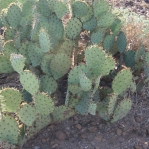
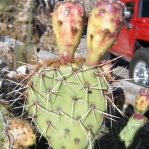
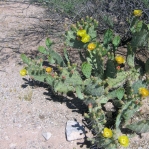
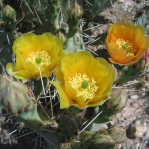
Hello, I live in Southern Apache County of Arizona along the New Mexico border elevation 7,300 ft above sea level. We have what I believe are the riparian type of prickly pear around the Juniper trees. We have 40 acres of land and want to cultivate these prickly pears for the beautiful red fruit that appears on them. But are they good to eat and what kind of nurturing do they require including fertilizer that isn’t harmful to us or them? Any additional information would be welcome and very helpful and I am happy to have found your website. Do any of the Native animals around here eat them as well so we know what to expect from the environment. We are very remote and have no neighbors for miles only wild animals and free range livestock. Thank you for your time, sincerely Randall Bates.
Hi Randall,
Thank you for visiting our website. Thank you for your question.
You said, Any additional information would be welcome and very helpful and I am happy to have found your website. Do any of the Native animals around here eat them as well so we know what to expect from the environment.”
Native animals will eat Opuntia fruit, but maybe they will leave some. They eat a lot in dry years. Fertilizer is not necessary if you plant them in the ground. If you plant in pots, use fertilizer sparingly, perahsps 1/4 what you might use for a rose.
More Questions are welcome.
Joe Shaw